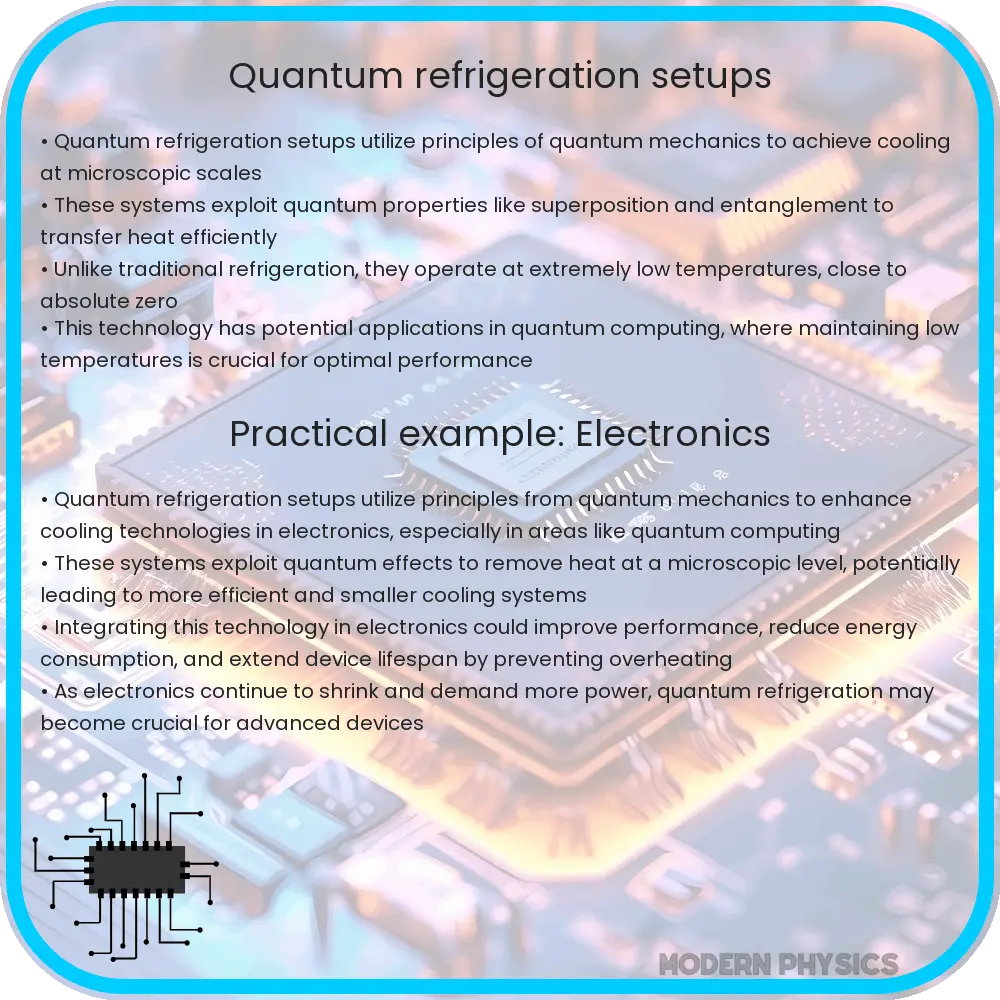In the realm of thermodynamics, a recent phenomenon has emerged that challenges conventional paradigms: magnetic refrigeration. This innovative approach utilizes the magnetocaloric effect, where certain materials exhibit a change in temperature when exposed to a magnetic field. The magnetic chill can be likened to a symphony, where the conductor, in this case, is the magnetic field orchestrating an ensemble of atomic movements, culminating in a harmonious cooling process. As we explore the intricacies of this emerging technology, one may appreciate its potential to redefine refrigeration and energy efficiency.
Though refrigeration has long relied on the principles of vapor-compression, magnetic refrigeration offers a fresh lens through which to view the quest for cooling solutions. In a world increasingly concerned with energy consumption and environmental impact, the allure of magnetic refrigeration is palpable. By harnessing the interplay between magnetism and temperature, we can envision a future wherein refrigerators operate with minimal ecological footprints, utilizing materials that promise not only efficiency but also sustainability.
The foundation of magnetic refrigeration lies in the magnetocaloric effect, a phenomenon that describes the temperature change observed in a magnetic material when an external magnetic field is applied or removed. When these materials are magnetized, they undergo an adiabatic process, absorbing heat from their surroundings. Conversely, when the magnetic field is removed, they expel heat, often resulting in a drop in temperature that can be harnessed for refrigeration. Thus, this method exhibits an elegant simplicity akin to flipping a switch—turning on the cooling power through the manipulation of magnetic fields.
To understand the qualifications of magnetic refrigeration, one must consider the key materials involved in the process. The advent of sophisticated alloys and compounds has rendered the magnetocaloric effect more pronounced and tunable. Materials such as gadolinium and its compounds are often employed due to their remarkable magnetic properties at certain temperatures. The quest, however, does not end with the selection of suitable substances; fabricating magnetic refrigerants with optimal characteristics remains an ongoing challenge for researchers. Gadolinium, for instance, demonstrates promising results in terms of its magnetic enthalpy changes, offering tranquil potential for efficient cooling systems.
The efficiency of magnetic refrigeration systems is an intriguing aspect worth exploring. Unlike traditional systems that suffer from entropy increment during phase transitions, magnetic refrigeration boasts the potential for higher efficiencies. Cooling cycles that capitalize on magnetocaloric materials operate with a lower energy input compared to their vapor-compression counterparts. This offers a beacon of hope for industries striving for enhanced energy conservation and reduced greenhouse gas emissions.
The transition to magnetic refrigeration is not without its challenges. For one, the temperature range and suitability of magnetocaloric materials must be meticulously evaluated. Many conventional cooling applications operate in a temperature range far removed from that at which most magnetic materials exhibit their optimal performance. This limitation emphasizes the need for continual research into the development of new materials that can operate efficiently across diverse temperature gradients.
Pragmatically, the realization of this technology into commercial applications draws on advancements in engineering and materials science. Innovations in magnet design and thermal coupling may yield refrigerators that not only meet, but exceed current performance benchmarks. One may visualize this advancement as akin to the maturation of fine wine; careful attention to every step ultimately determines the quality of the yield. The science behind magnetic refrigeration is constantly evolving, with interdisciplinary collaboration at its core, driving progression in both theoretical understanding and practical application.
As research progresses, the synthesis of magnetic refrigeration technology into everyday applications becomes increasingly feasible. There is a burgeoning interest in implementing magnetic bio-refrigeration, particularly in the realm of medical technology for preserving delicate samples or medications sensitive to temperature fluctuations. Forecasting the evolution of refrigeration, it becomes tantalizingly clear that this step towards a more sustainable future may very well involve coupling magnetic refrigeration systems with renewable energy sources; an approach that would significantly augment energy independence and environmental stewardship.
Moreover, the advantages of magnetic chilling extend beyond mere operational efficiency. The compact design characteristic of magnetic refrigeration systems yields systems that can be easily integrated into various environments. This leads to a less intrusive presence in our living spaces, while simultaneously promoting the pursuit of aesthetic and functional design in household appliances. Imagine a refrigerator not only cooling your food but also reducing your energy bills and carbon footprint. Such a scenario exemplifies the broader implications of magnetic refrigeration technology: the potential to meld convenience with environmental consciousness.
In conclusion, the exploration of magnetic refrigeration heralds an evocative transition within the field of cooling technologies. With its unique appeal rooted in the magnetocaloric effect, this process presents a viable alternative to conventional refrigeration while promising enhanced efficiency and environmental sustainability. As researchers endeavor to unlock the full potential of magnetic materials and integrate them into practical applications, the vision of a future powered by innovative cooling solutions comes nearer. Just as the orchestra finds its rhythm through meticulous practice, so too does the future of refrigeration draw closer with every breakthrough in magnetic chill technology. This paradigm shift offers not just a new method of cooling, but a foundational change in how humanity approaches energy consumption and environmental stewardship.












